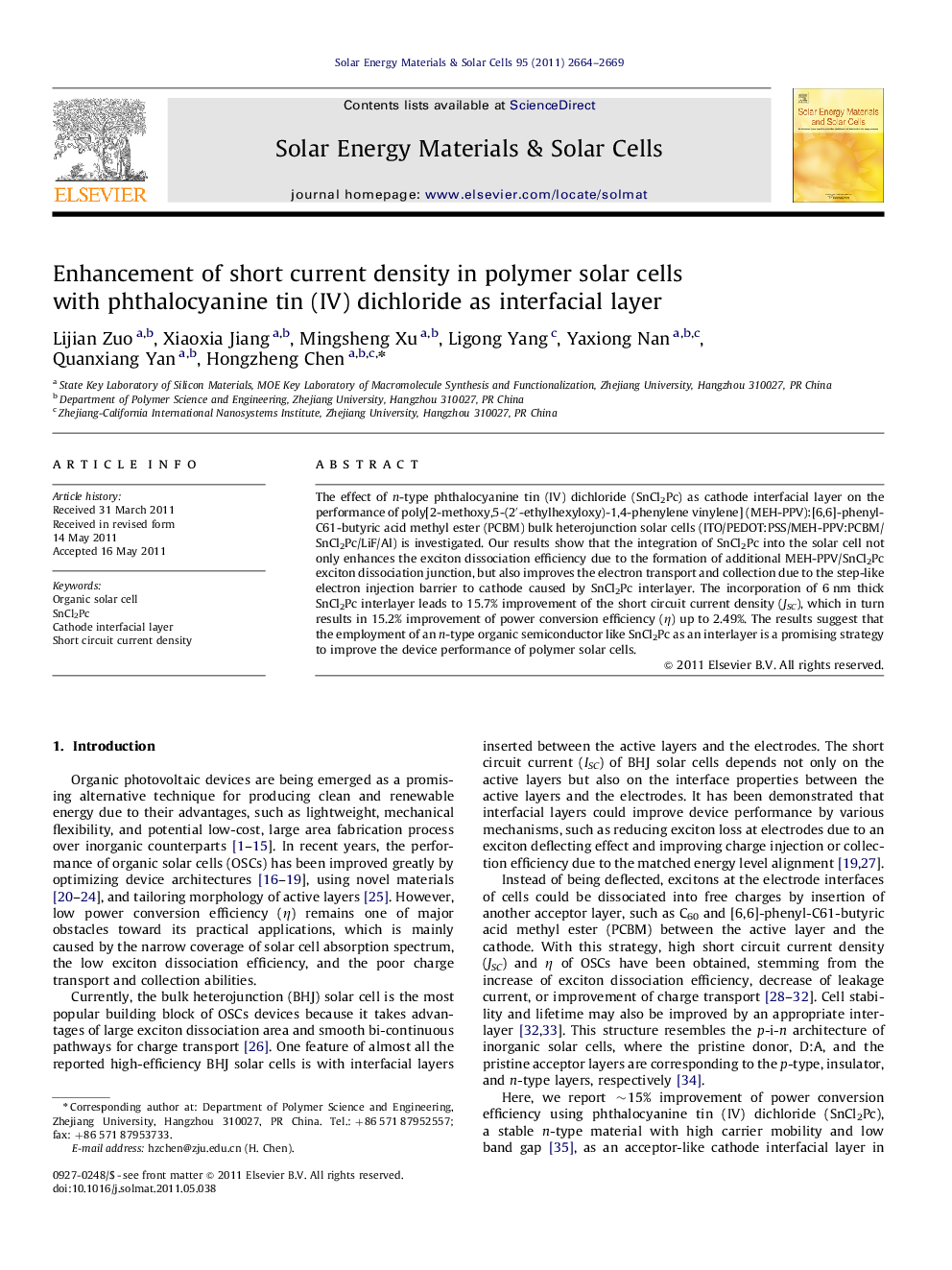| کد مقاله | کد نشریه | سال انتشار | مقاله انگلیسی | نسخه تمام متن |
|---|---|---|---|---|
| 78731 | 49341 | 2011 | 6 صفحه PDF | دانلود رایگان |

The effect of n-type phthalocyanine tin (IV) dichloride (SnCl2Pc) as cathode interfacial layer on the performance of poly[2-methoxy,5-(2′-ethylhexyloxy)-1,4-phenylene vinylene] (MEH-PPV):[6,6]-phenyl-C61-butyric acid methyl ester (PCBM) bulk heterojunction solar cells (ITO/PEDOT:PSS/MEH-PPV:PCBM/SnCl2Pc/LiF/Al) is investigated. Our results show that the integration of SnCl2Pc into the solar cell not only enhances the exciton dissociation efficiency due to the formation of additional MEH-PPV/SnCl2Pc exciton dissociation junction, but also improves the electron transport and collection due to the step-like electron injection barrier to cathode caused by SnCl2Pc interlayer. The incorporation of 6 nm thick SnCl2Pc interlayer leads to 15.7% improvement of the short circuit current density (JSC), which in turn results in 15.2% improvement of power conversion efficiency (η) up to 2.49%. The results suggest that the employment of an n-type organic semiconductor like SnCl2Pc as an interlayer is a promising strategy to improve the device performance of polymer solar cells.
I–V characteristic of MEH-PPV:PCBM solar cell with deposition of SnCl2Pc. The exciton dissociation and charge transport process with and without SnCl2Pc in MEF-PPV:PCBM solar cells.Figure optionsDownload as PowerPoint slideHighlights
► We introduce tin phthalocyaine dichloride (SnCl2Pc) in organic solar cell.
► SnCl2Pc functions as cathode interfacial layer in MEH-PPV:PCBM solar cells.
► Short circuit current density increases with deposition of SnCl2Pc.
► It is attributed to improved exciton dissociation efficiency and charge transport.
Journal: Solar Energy Materials and Solar Cells - Volume 95, Issue 9, September 2011, Pages 2664–2669